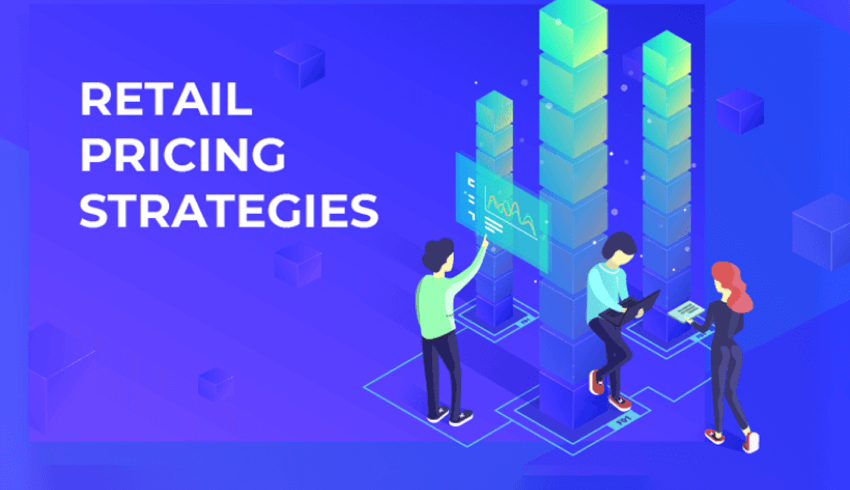In the fast-paced world of e-commerce, staying competitive is a constant challenge. Managing prices across an extensive product portfolio while keeping up with market trends and competitor strategies can be overwhelming. This is where pricing tools come in, helping online stores and brands optimize their pricing strategies with data-driven insights and automation.
Understanding price analysis software
At its core, price analysis software allows online retailers to gain a clear understanding of the pricing landscape. By collecting and analyzing real-time data from competitors and the market, these tools provide insights into price fluctuations, consumer behavior, and trends. This enables store owners and e-commerce managers to make informed pricing decisions without manually monitoring every product.
Instead of relying on guesswork, price analysis software offers a structured way to assess product value in relation to competitors. This data can be used to identify opportunities where prices can be adjusted to increase margins or maintain competitiveness without compromising sales volume. With the right price analysis software, businesses can effortlessly track industry movements and stay ahead in the pricing game.
The power of dynamic pricing
One of the most impactful features of pricing tools is dynamic pricing. Unlike traditional pricing strategies that rely on fixed price points, dynamic pricing adjusts prices automatically based on market conditions, demand, and competitor pricing. This allows e-commerce stores to maximize revenue while staying attractive to potential buyers.
Dynamic pricing works through predefined rules and automation. Retailers can set specific parameters such as minimum and maximum price limits, ensuring that pricing remains within an acceptable range. This prevents products from being sold at a loss while allowing flexibility in responding to market shifts. With real-time updates, online stores can maintain optimal pricing without constant manual intervention. Dynamic pricing ensures that prices are always competitive, helping retailers capture market share and increase profitability.
How pricing tools save time and effort
Manually tracking competitor prices and adjusting product pricing is a time-consuming process, especially for businesses managing thousands of SKUs. Pricing tools like Priceshape streamline this by automating price updates, making it easy to maintain competitive pricing across a vast product portfolio.
Retailers no longer need to spend hours gathering market data or making pricing adjustments by hand. Instead, they can rely on automation to ensure products are always priced optimally. This not only saves time but also minimizes the risk of human error in pricing decisions.
Beyond automation, these tools also provide centralized dashboards where pricing insights are easily accessible. Users can filter data, compare trends, and adjust strategies with a few clicks. By reducing the manual workload, pricing tools free up time for e-commerce teams to focus on other aspects of growth, such as customer experience and marketing. With price analysis software, businesses gain an effortless way to monitor market trends and respond effectively to price fluctuations.
Setting up rules for smarter pricing strategies
To get the most out of pricing tools, brands and online retailers can establish rules that align with their pricing strategy. These rules determine how prices should be adjusted under specific conditions, ensuring that pricing remains strategic rather than reactive.
For example, a retailer can set a rule to lower prices only when competitors reduce theirs below a certain threshold. Alternatively, price increases can be automated when demand surges or stock levels drop. These predefined rules create a dynamic but controlled approach to pricing, ensuring that margins remain healthy while staying competitive in the market.
Pricing tools also enable segmentation, allowing retailers to apply different pricing strategies based on customer groups, regions, or product categories. This level of control ensures that pricing adjustments are not made blindly but with precision and relevance to specific target audiences.
Gaining deeper market insights
Pricing tools are not just about adjusting prices; they also provide valuable insights into market dynamics. By continuously tracking competitor pricing and consumer demand, these tools help online retailers anticipate shifts before they happen. This foresight allows businesses to adapt pricing strategies proactively instead of reacting too late.
Market trends, seasonal fluctuations, and even external factors like inflation can be monitored with price analysis software. Retailers can use this data to make informed decisions about stock levels, promotions, and long-term pricing strategies. The ability to analyze historical data also helps in predicting future trends, making strategic planning more effective. Price analysis software allows businesses to refine their pricing approach, making informed adjustments that align with consumer demand and competitor movements.
Improving profitability with optimized pricing
Pricing tools do more than keep prices competitive—they help maximize profits. By identifying pricing gaps and inefficiencies, brands can fine-tune their strategies to ensure they are neither overpricing nor underpricing products. Finding the right balance leads to increased sales volume and better margins.
In highly competitive markets, minor price adjustments can significantly impact conversion rates. Being just slightly cheaper than a competitor can result in a noticeable increase in sales, while keeping a small but strategic premium on exclusive products can enhance profitability. Pricing tools provide the insights and automation needed to strike this balance effectively. Leveraging dynamic pricing, businesses can make pricing decisions that optimize revenue while maintaining customer trust.
Integrating pricing tools with other e-commerce systems
To get the most value from pricing software, integration with other e-commerce systems is key. Most pricing tools can be linked with e-commerce platforms, inventory management systems, and analytics tools, ensuring a seamless flow of data.
For instance, integrating pricing software with an inventory system ensures that pricing adjustments consider stock levels, preventing unnecessary discounts on low-stock items. Similarly, connecting with analytics platforms provides a comprehensive view of how pricing impacts conversion rates, customer behavior, and overall revenue.
Many modern pricing tools also offer API access, allowing businesses to create customized integrations tailored to their needs. This flexibility makes it easy to incorporate pricing automation into an existing e-commerce ecosystem without disruption. With price analysis software seamlessly connected to other business tools, pricing adjustments become even more data-driven and effective.
The future of pricing optimization
As artificial intelligence and machine learning continue to evolve, pricing tools are becoming even more sophisticated. AI-driven pricing software can analyze vast amounts of data, predict market movements, and recommend optimal price points with minimal human intervention. This takes dynamic pricing to the next level, enabling smarter, more adaptive pricing strategies.
Machine learning algorithms can also detect patterns that might be missed by manual analysis. For example, identifying subtle demand trends before they become obvious to competitors can give an edge in pricing adjustments. As technology advances, pricing tools will become even more powerful, making them an indispensable asset for online retailers and brands looking to stay ahead in the market. With AI-driven price analysis software and dynamic pricing strategies, businesses will continue to refine their approach, staying competitive and maximizing profitability in an evolving digital landscape.






